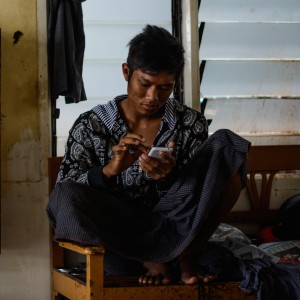
A decade ago, social media was far from the human mind. But in today’s world, Facebook, Twitter, and Instagram—among others—are sources of everyday conversation. And they’re all accessible at our fingertips.
So how can social media be leveraged for your ministry overseas?
By sharing mission updates, articles, news from your region, support needs, stories, prayer requests, and pictures of your everyday life, you can stay connected with family, friends, and supporters while giving them a taste of your life on the mission field.
Here are a few tips to help you do just that on two of the biggest social media platforms—Facebook and Twitter.
This social platform is designed to help you stay connected with people you know personally. By simply providing an authentic email address and password, you can share your life overseas with those back home.
Post Length
Facebook does not limit your post length, so it’s a prime place to share longer updates.
This being said, try not to share a novel every time you post. If you find your updates are longwinded and lacking engagement—in the form of likes, comments, and shares—it may be best to create a blog and share it’s link for in-depth ministry updates.
Share Visual Content
People love seeing pictures and videos on Facebook.
Visual content tends to perform best because it stands out on the cluttered newsfeed, so share appealing photos, graphics, and videos that convey what your daily life looks like. Simply stated, your Facebook friends really want to see what’s going on in your world.
Stay Consistent
Facebook optimizes newsfeed content, so consistency is key in ensuring your audience sees your posts. You don’t have to post at the same time each day, but having some consistency in your sharing habits will give your friends—and Facebook—a reason to keep your posts top of mind.
It’s best practice to share at least one update each day.
Twitter is ideal for finding people with common interests, discovering information, and breaking news. By following friends, celebrities, news outlets, companies, politicians, pastors, and more, you can monitor the latest trends and conversations pertaining to missionary life and faith.
Keep Posts Short
Twitter limits posts to 140 characters, signaling that users are interested in short, sweet, and pointed updates.
Try to keep your tweet updates around 130 characters so that your followers can add their commentary to retweets. Although this is a concise platform, do not sacrifice grammar for the sake of tweeting.
Use Hashtags
Hashtags—marked by the “#” symbol—are search words used for trending conversation topics and allow Twitter users to find and connect with people who share their interests.
For example, on Amazon’s recent “Prime Day,” tweets using #PrimeDay were automatically pulled to create a conversation database. It took one click on the hashtag for Twitter users to see the latest discussions and engage with other people participating in the big sale.
As with anything, hashtags are good in moderation. Typically tweets using one or two hashtags are engaged with most.
Engage in Conversation
Twitter is an ongoing conversation, so join in!
If you see a tweet you like, retweet it. Encourage people you follow by replying to their post if you’re inspired by something they share. Ask questions of other experts in your field. Mention your favorite pastors, authors, and bloggers in your tweets. Share short tidbits of what God is teaching you or what you’ve learned about the culture you’re emerged in.
Have fun with Twitter. There are no limits to how much you share on this platform.
Social Media Security
Living a life overseas under the banner of Christ comes with many risks.
No matter what platform you’re using, it’s important to employ appropriate security measures to ensure your social sharing does not hinder your ministry.
Create Strong Passwords
The more sophisticated your password, the less likely you are to be hacked. Include numbers, special characters, and upper and lowercase letters to increase your password security.
Many Internet applications give you the option of connecting through your Facebook and Twitter accounts. For the sake of password security, it’s best practice to create separate logins for these programs.
Know your security settings
Before sharing anything review your security settings.
Facebook security is relatively sophisticated and allows you to set up restrictions for who can find your profile or see your posts. The region you serve should dictate the level of security for your profile.
Twitter’s security settings are simple, allowing for completely private or public profiles. The setting you choose determines whether or not people can see or share your tweets.
Both of these social media channels allow you to share your location. You may want to turn this feature off depending on where you live.
Consider what you share
Will your post make you a target for harassment or oppression?
Should you use a pseudonym?
These are just a few questions you should consider before posting any content online. Social media is an incredible tool, but if not used wisely, it could spark unwanted conversations and attention.

